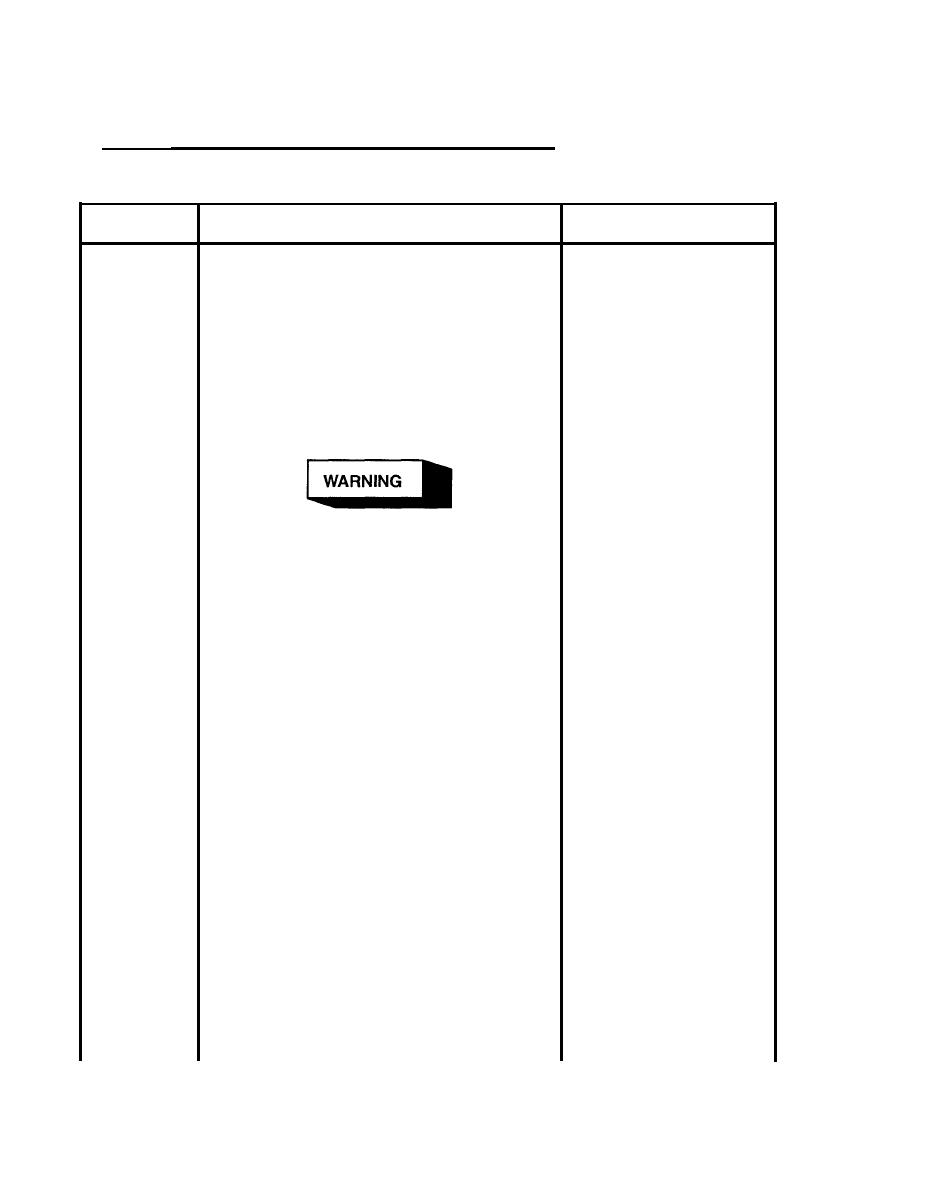
TM 9-4120-378-14
5.6 REFIGERATION SYSTEM SERVICING - (BRAZING/DEBRAZING). - Continued
Remarks
Action
Location/Item
Determine which joints are to be debrazed.
(1)
Due to the limited work space inside the air
conditioner, it may be more convenient to re-
move a part of the interconnecting tubing with
the component rather than debrazing the
joints on the component itself.
Before debrazing a joint on a valve, disas-
(2)
semble the valve to the extent possible, then
wrap all but the joint with a wet rag to act as a
heat sink.
The polyurethane foam used as in-
sulation in the air conditioner will break
down to form toxic gases if exposed to
the flame of a torch at brazing temper-
ature.
Protect insulation, wiring harnesses, cabinet,
(3)
and other surrounding components with ap-
propriate shields.
Be sure the work area is well ventilated and
(4)
that dry nitrogen is flowing through the refrig-
eration system at a rate of less than 1-2 cfm
(0.028-0.057 m3/minute).
Apply sufficient heat uniformly around the joint
(5)
to quickly melt the filler alloy. If heat is applied
slowly, or only on one side, the entire compo-
nent or length of tubing will be heated and filler
alloy in adjacent joints may also be melted.
Remove heat as soon as the joint separates.
d.
Cleaning Debrazed Joints. All filler alloy must be
cleaned from debrazed joints before reassembly.
Heat each piece of the joint until the filler alloy is
melted and then wipe it away with a dry cloth. Be
sure no filler alloy or other debris are left inside any
tubing, fitting or component.
e.
Reassembly. If tubing sections or fittings were re-
moved with a component, debraze them from the
component, clean the joints, and braze them to the
new component before reinstallation.
5-16

